Context
According to data shared by the annual Health of Nation report by Apollo Hospitals, India is rapidly emerging as the “cancer capital of the world”.
India is Fast Emerging as a Cancer Capital of the World
- Rise in NCDs in India: The report sheds light on the rise of non-communicable diseases (NCDs) in India, which significantly impact the nation’s overall health.
About Cancer
- About: Cancer is a disease in which some of the body’s cells grow uncontrollably and spread to other parts of the body.
- Mechanism: Cancer starts when a gene or several genes mutate and create cancerous cells. These cells create cancer clusters, or tumors.
- Cancerous cells may break away from tumors, using the lymphatic system or bloodstream to travel to other areas of your body.
Status of Cancer Prevalence in India
- NCD-Related Deaths: Around 63 percent of all deaths in India are due to NCDs. Trend related to cancer cases in India:
- 1.39 million: Number of cancer cases in 2020
- 1.57 million: Expected number of cases in 2025
- 13%: Growth in five year
- Economic Cost of Cancer: By 2030, these diseases are projected to cost India $3.55 trillion in lost economic output.
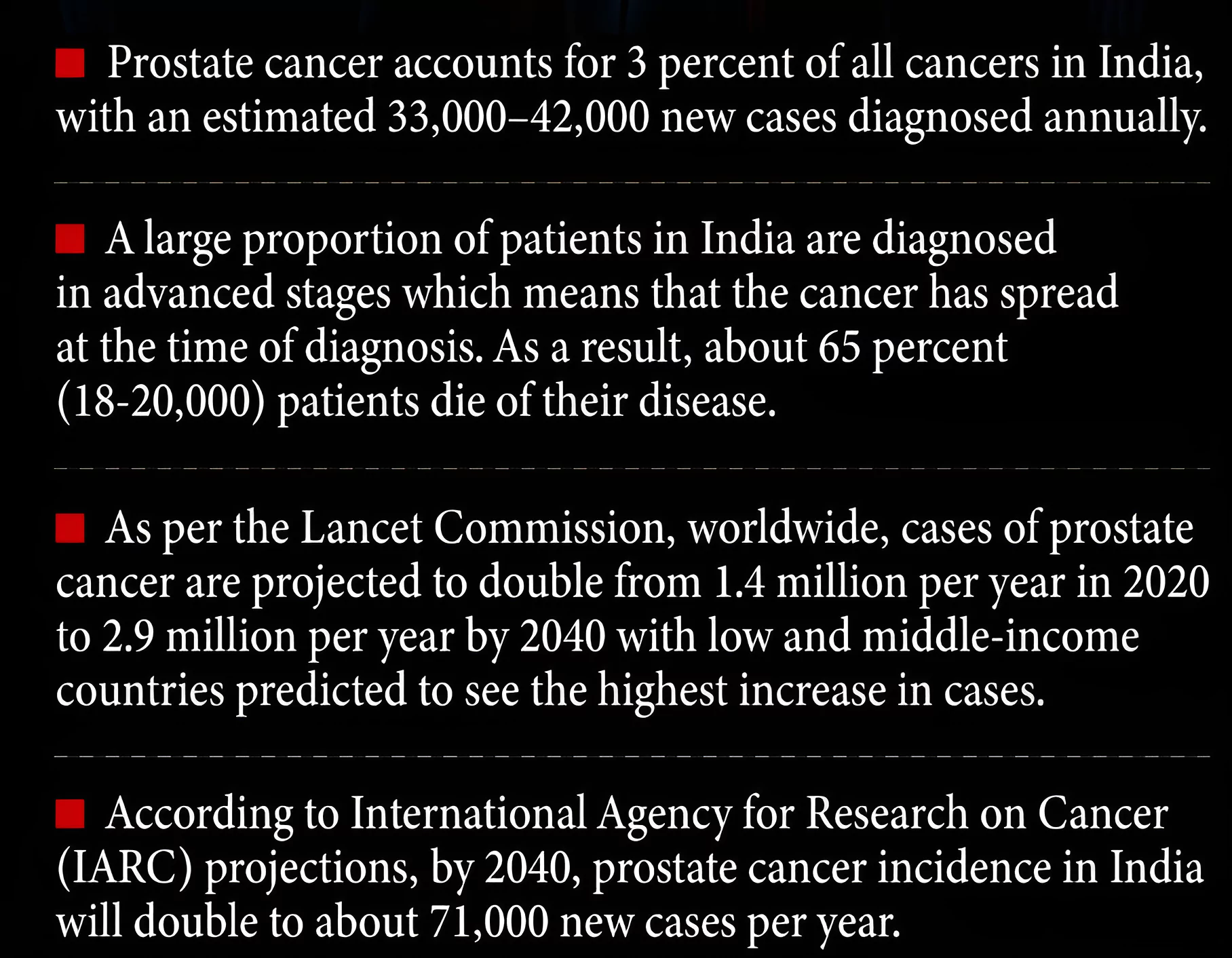 Median Age for cancer diagnosis in India: The median age for cancer diagnosis in India is lower than in other countries:
Median Age for cancer diagnosis in India: The median age for cancer diagnosis in India is lower than in other countries:-
- 52 years: Average age of breast cancer diagnosis in India versus 63 in the US and Europe
- 59 years: Average age of lung cancer diagnosis versus 70 years in the West
- 30%: Share of colon cancer patients aged less than 50 years
- Cancer Screening Rates: Despite these trends, cancer screening rates in India remain very low:
- 1.9%: Breast cancer screening in India compared to 82% in the US, 70% in the UK, and 23% in China
- 0.9%: Cervical cancer screening in India compared to 73% in the US, 70% in the UK, and 43% in China.
- Cancer screening is looking for cancer before a person has any symptoms. Screening tests can help find cancer at an early stage, before symptoms appear.
- Extrapolation of Western data in India: The report highlighted the threshold for Prostate-Specific Antigen (PSA) – a blood test – in Indian men was different from the current standards suggesting the need for local data.
- Rise in Colon Cancer: The hospital found that colon cancer cases were increasing among young people, with 30% of colon cancer patients at Apollo Hospitals aged less than 50 years.
- Rise in Prostate Cancer Cases in India:
- Current Trend: According to the Latest Lancet Commission paper, prostate cancer accounts for three per cent of all cancers in India, with an estimated 33,000-42,000 new cases diagnosed annually.
- Prostate cancer incidence in India will double to about 71,000 new cases per year by 2040.
- Prostate cancer Related Death: A large proportion of patients in India are diagnosed in advanced stages which means that the cancer has spread at the time of diagnosis.
- As a result, about 65 per cent (18,000-20,000) patients die of their disease.
- Global status: Cases of prostate cancer are projected to double from 1.4 million per year in 2020 to 2.9 million per year by 2040 worldwide, with low and middle-income countries predicted to see the highest increase.
- Globally, prostate cancer accounted for around 3,75,000 deaths worldwide in 2020, making it the fifth leading cause of cancer death among men.
Reasons for Cancer Prevalence in India
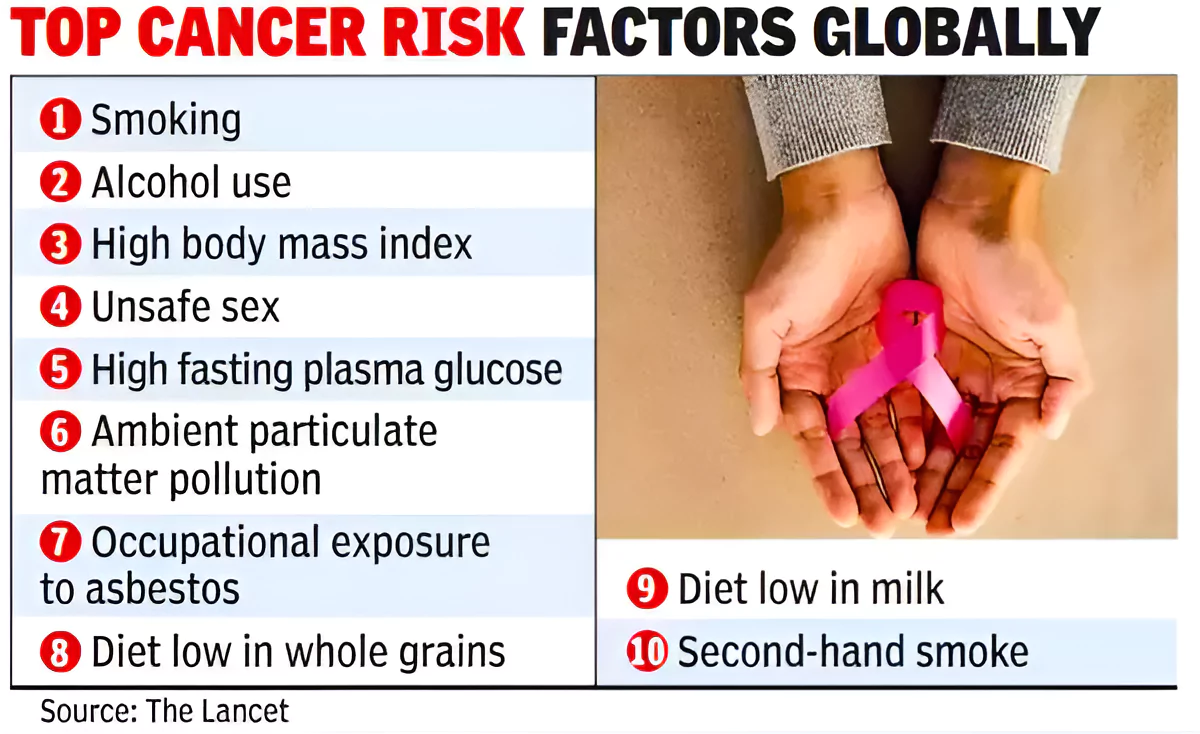
-
- Smoking, alcohol use, high BMI (Body Mass Index) Index) and other known risk factors were responsible for over 37% of cancer deaths in India in 2019, as per a Lancet Report.
-
Obesity:
- Obesity is a significant risk factor for cancer development. Studies have linked it to an increased likelihood of breast, colorectal, pancreatic, and kidney cancers.
- Obesity incidence has increased from 9% in 2016 to 20% in 2023. Apollo hospital observed that 90% of women and 80% of men had a higher waist-to-hip ratio than recommended.
-
Unhealthy Diet:
- An unhealthy diet that is high in fat, and low in fibre may increase the risk of many cancers including bowel, lung, prostate and uterine cancers.
- A diet high in processed or red meats can raise the risk of getting some types of cancer. Excess fats, proteins, and calories in the diet might raise the risk of getting cancer.
- Besides this, excessive salt intake over a long period has been linked to stomach and gastrointestinal cancers.
-
Stress:
- Chronic stress can have disastrous effects on your health, including an increased risk of cancer.
- According to Apollo hospital study, the percentage of depression is highest among those in the age category of 18-25, where one in five was depressed.
- 80% of young adults (18-30 years) and seniors (above 65 years) reported significant stress levels.
-
Poor Oral Hygiene:
- Chronic inflammation and infections in the mouth, often associated with poor oral hygiene, have been linked to an increased risk of oral cancers.
-
Occupational and Environmental Exposures:
- Exposure to certain chemicals and toxins in the workplace or environment, such as asbestos, benzene, and radon, can increase the risk of various cancers.
-
Infections:
- Certain infections, such as human papillomavirus (HPV), hepatitis B and C viruses, and Helicobacter pylori (H. pylori), are linked to an increased risk of specific cancers, including cervical, liver and stomach cancers.
-
Others:
-
- Lack of Physical Activity
- Excessive Sun Exposure
Why is there a Need for Early Awareness and Detection?
- Lack of Symptoms: For example, Prostate cancer may cause no signs or symptoms in the early stages and it is only in the advanced stages that patients report symptoms like trouble urinating, bone pain, blood in the semen or urine and others.
Available Cancer Treatment in India
- Chemotherapy: It uses strong chemicals that target the cancer cells.
- Immunotherapy: It boosts the body’s natural defenses.
- Radiation therapy: It uses high-energy rays to eliminate the cancer cells and surgery to remove the affected tissue.
|
- Regular Screening: Although lifestyle can be managed, early screening in Indian men, especially those above 60 years, is required.
- Older men with symptoms or prostate enlargement like frequent and night-time urination, weak urine stream and pain or blood in the urine should seek medical attention and have a PSA blood test done.
Challenges with Cancer Care in India
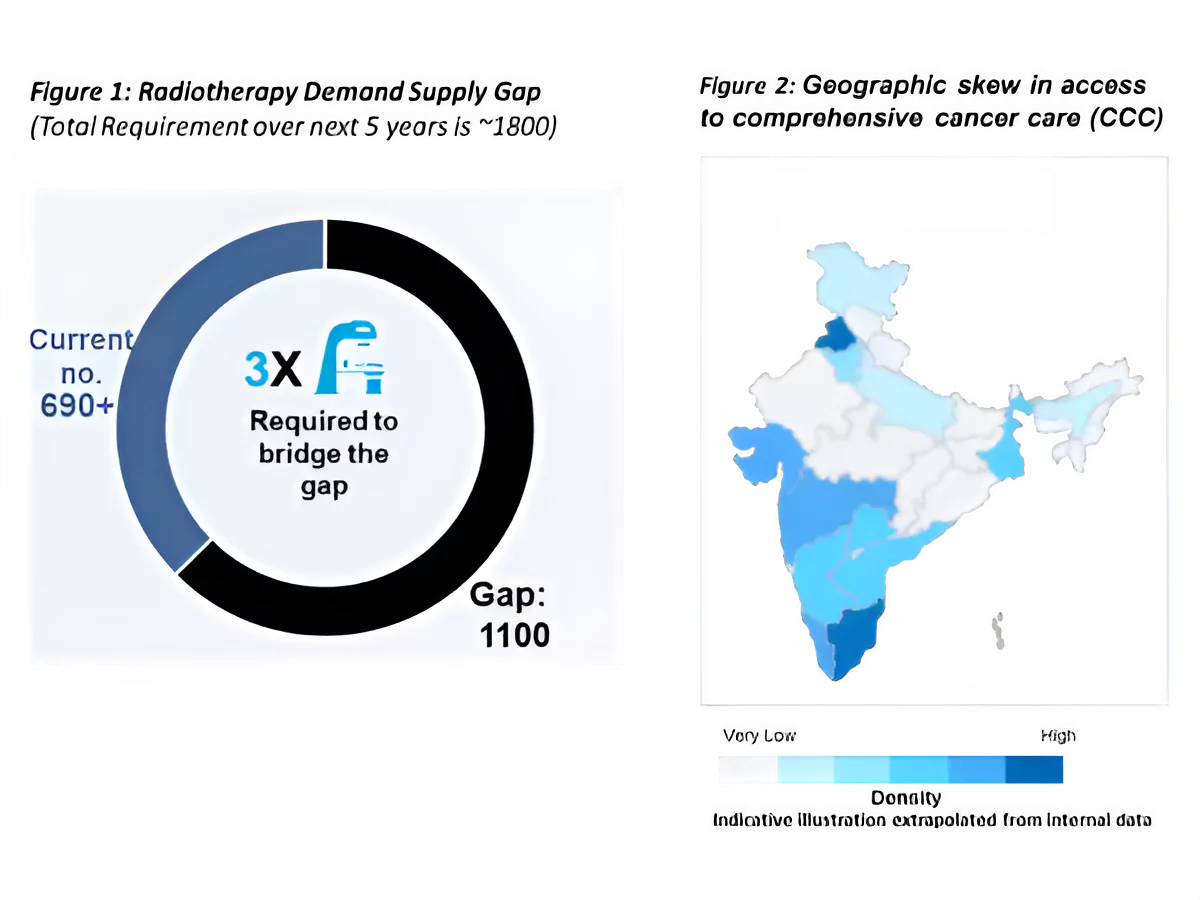
-
Access to Radiotherapy:
- The WHO recommends one megavoltage radiotherapy unit per million people.
- To meet this recommendation, India would need an additional 600 or so units to ensure that the 800,000 people with cancer who require radiotherapy each year can be adequately treated.
- Moreover, access to radiotherapy has increased but mostly in urban areas. Coverage of modern radiotherapy treatments within government health schemes has improved but the poorest sections have little access even to palliative radiotherapy.
-
Opioid Use for Pain Relief:
- Its use in late stages is another challenge. In 1985, the Government adopted stringent legislation to regulate narcotic misuse and trafficking.
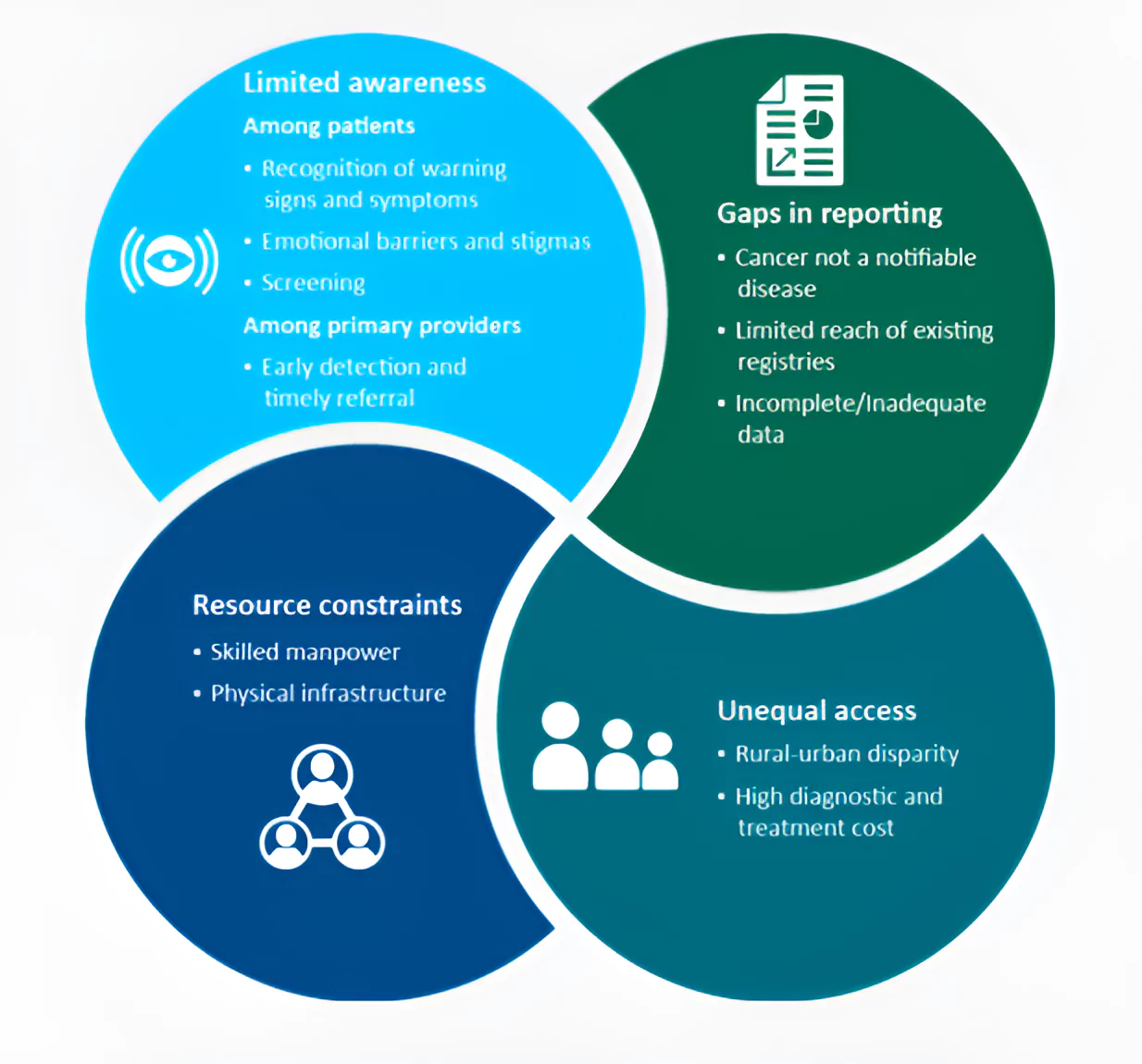 As a result, medical use of morphine decreased by 97 percent, which severely limits access for pain management.
As a result, medical use of morphine decreased by 97 percent, which severely limits access for pain management. - An amendment to the Narcotic Drugs and Psychotropic Substance Act in 2014 improved opioid access, but there is a lag in implementation across the country.
-
Lack of Sufficient Infrastructure and Resources:
- The healthcare facilities, especially in rural areas, lack the necessary equipment, trained personnel, and treatment options required for comprehensive cancer care.
- This leads to delays in diagnosis, limited treatment options, and poorer outcomes for patients.
-
Affordable Cancer Treatment:
- It remains a significant barrier for many patients.
- The high cost of cancer drugs, along with expenses related to diagnostics, hospitalization, and supportive care, often push patients and their families into financial distress.
- When considering the cost across all hospitals, including charitable and trust-run institutions, cancer care averages INR 61,216 per hospitalisation—a massive financial challenge for large portions of the population.
-
Shortage of Skilled Oncologists and Healthcare Professionals:
- This shortage not only affects the delivery of cancer care but also contributes to disparities in access to specialized treatment, particularly in rural and underserved areas.
- The bulk of cancer treatment centres are in cities, while 70 % of the population live in rural areas.
-
Social Stigma:
- The stigma attached to cancer can lead to isolation and discrimination, severely impacting the mental health and well-being of patients.
- This stigma, rooted in cultural beliefs and lack of awareness, exacerbates the challenges faced by patients, hindering timely and effective treatment.
- The psychological toll of cancer extends to caregivers and families, disrupting family dynamics and often leading to a diminished quality of life.
Initiatives for Cancer Treatment and Prevention in India
- CAR-T cell therapy: India’s first home-grown gene therapy launched for cancer at IIT Bombay.
- ProHealth Score: It is a digital health risk assessment tool for assessing an individual’s health and well-being, and evaluates factors such as family history, lifestyle and current symptoms.
- Ayushman Bharat Pradhan Mantri Jan Arogya Yojana (PMJAY): It offers health insurance up to INR 5 lakhs per family per year for secondary and tertiary care hospitalisation, covering many cancer-related treatments.
- National Programme for Prevention and Control of Cancer, Diabetes, Cardiovascular Diseases & Stroke (NPCDCS): It aims to prevent and control chronic non-communicable diseases, including cancer.
- Rashtriya Arogya Nidhi (RAN): It provides financial assistance to patients living below the poverty line who suffer from life-threatening diseases, including cancer, allowing them to receive medical treatment at government hospitals.
- State Illness Assistance Funds: Set up by various state governments, offer financial aid to poor patients to cover treatment costs for different diseases, including cancer. Health Minister’s Cancer Patient Fund (HMCPF): Within Rashtriya Arogya Nidhi, it provides financial assistance for cancer treatment through the procurement of generic drugs.
- Tertiary Care Cancer Centres (TCCC) scheme: It aims to set up state cancer institutes and tertiary care cancer centres across the country to improve facilities for cancer treatment. Pradhan Mantri Swasthya Suraksha Yojana (PMSSY): It includes the establishment and upgrade of government medical colleges and institutions, enhancing resources for cancer care and strengthening the National Cancer Grid (NCG).
- First Cancer Care (FCC) initiative: Introduced in 2022, it utilises advanced technology to transform cancer prevention and treatment, focusing on quality, timeliness, precision, and fairness.
- The FCC initiative provides a comprehensive framework that encompasses prevention, early detection, curative care, and governance.
Way Forward
-
Investment in Research and Development:
- Investment in research and development is needed to discover and develop innovative cancer treatments.
- This includes novel therapeutics, targeted therapies, and immunotherapies that offer improved efficacy and fewer side effects. It may include:
- Enhancing initiatives like NCG through pooled procurement strategies for infrastructure and equipment
- Providing comprehensive training for healthcare workers, can maximise the utilisation of resources.
- Replication and integration of successful initiatives like Tata Memorial Centre’s (TMC) hub-and-spoke model in public healthcare systems, with a focus on telemedicine.
- Connecting the health and wellness centres under the Ayushman Bharat initiative to the regional cancer centre (RCC) in a hub-and-spoke, could potentially strengthen the rural connectivity and fasten the time to diagnosis and delivery of efficient care.
-
Collaboration with Healthcare Providers:
- Collaboration between pharmaceutical companies and healthcare providers is essential to ensure the effective delivery of cancer care.
- This includes partnerships to improve access to diagnostics, provide training and education for healthcare professionals, and support the establishment of comprehensive cancer centers in underserved areas.
-
Patient Assistance Programs:
- Pharma companies can establish patient assistance programs to provide financial support to cancer patients who struggle to afford treatment.
- These programs may offer discounts, subsidies, or access to free medications for eligible patients, thereby reducing the financial burden of cancer care.
-
Streamlining Regulatory Environment:
- The regulatory authorities need to streamline the approval process for cancer drugs and ensure timely access to innovative therapies for patients.
-
Public Awareness Campaigns:
- Concerted efforts are needed in the form of awareness campaigns, community engagement programmes, and educational initiatives.
- These efforts can serve to emphasise the importance of early detection and lifestyle , dispel myths and misconceptions about cancer, reduce the associated stigma, and encourage early screening and treatment.
-
Early Screening:
-
- The surge in prostate cancer cases can be prevented provided all men over 60 get tested early with the same rigour that women are advised for breast screenings after 40.
- Artificial intelligence (AI)-based risk assessment models can help identify patients who are at elevated risk and should be enrolled in screening programmes for disease prevention and early detection.
- Geographic spread and population density in the country, high-risk and endemic regions can be strategically prioritized for timely and routine screening. Ex-the North East for tobacco related cancers.
-
Implementation of Harmonized and Standardized Clinical Protocols:
- These should be promoted across the continuum of cancer care. Current Cancer medicines lie in the 12% bracket of GST.
- Placing Cancer medicines in the NIL or 5% tax slab is needed to relieve cost burden on patients.
Also Read: ImmunoACT’s NexCAR19 CAR T Cell Therapy
| Prelims PYQ (2019):
‘RNA interference (RNAi)’ technology has gained popularity in the last few years. Why?
1. It is used in developing gene silencing therapies.
2. It can be used in developing therapies for the treatment of cancer.
3. It can be used to develop hormone replacement therapies.
4. It can be used to produce crop plants that are resistant to viral pathogens.
Select the correct answer using the code given below.
(a) 1, 2 and 4
(b) 2 and 3
(c) 1 and 3
(d) 1 and 4 only
Ans: (a) |
![]() 5 Apr 2024
5 Apr 2024
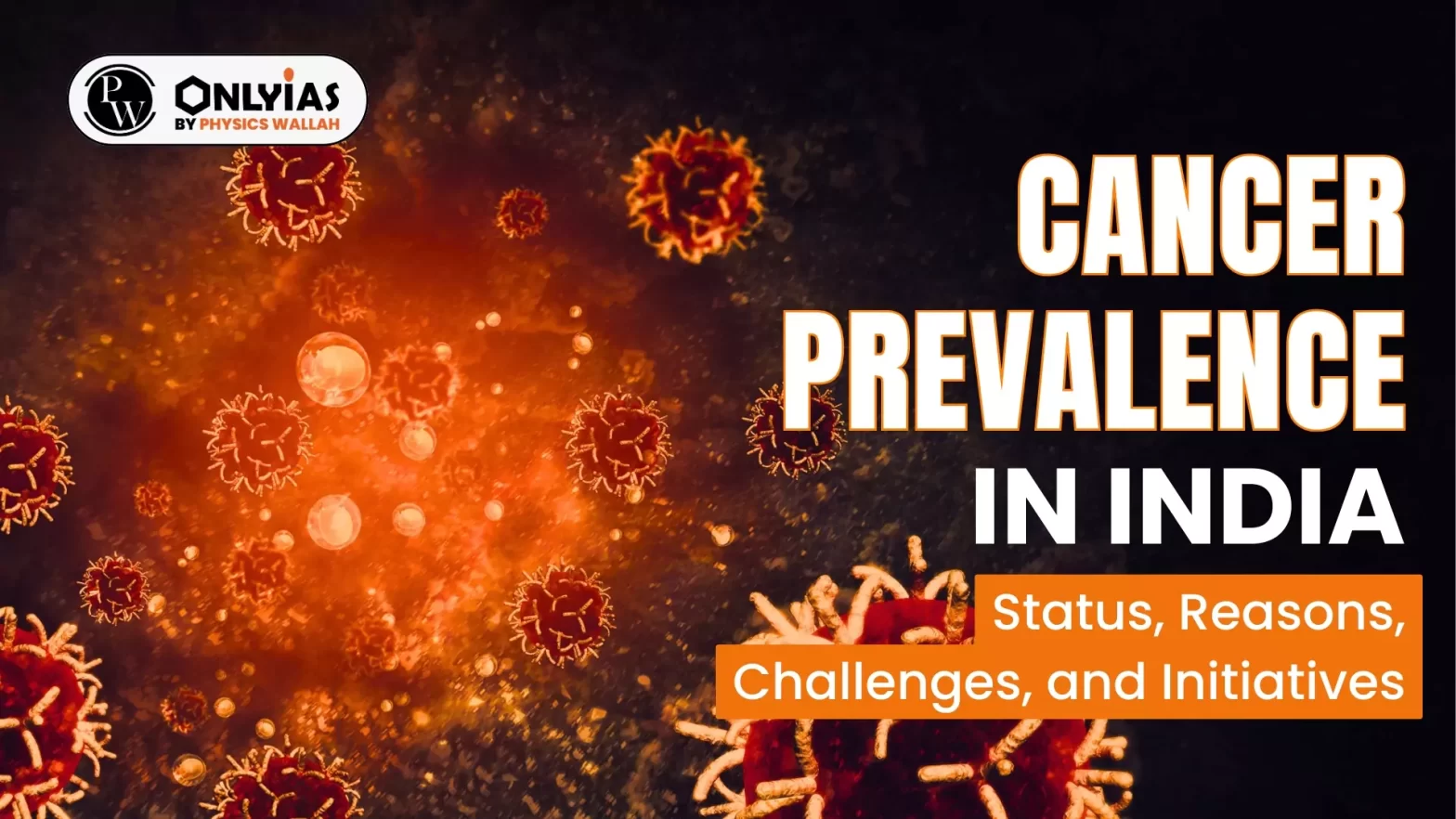
 Median Age for cancer diagnosis in India: The median age for cancer diagnosis in India is lower than in other countries:
Median Age for cancer diagnosis in India: The median age for cancer diagnosis in India is lower than in other countries:

 As a result, medical use of morphine decreased by 97 percent, which severely limits access for pain management.
As a result, medical use of morphine decreased by 97 percent, which severely limits access for pain management. 